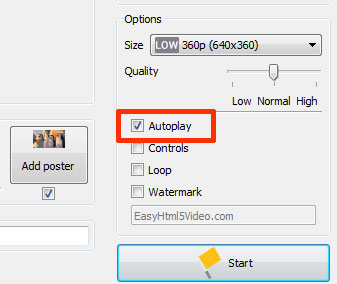

Safari 11+: Only sites manually allowed through browser.Settings will have autoplay with sound - muted autoplay otherwise but viewers may also downgrade this to no autoplay at all Firefox 66+: Only sites manually allowed through browser.Chrome 66+ or MS Edge 79+: Only sites allowed throughĮngagement Index will have autoplay with sound - muted autoplay otherwise.Problem is that major browser vendors have different views on the subject and have decided to implement different setīelow is a tested list of what is supported in most popular web platforms as of mid-2020 for HTML5 video: On autoplay with sound to allow for browser settings or specific pattern of user behavior to allow autoplay with sound again. Browser vendors then added more granularity to this ban This led to an era dominated by muted autoplay everywhere. Of having to endure a potentially high-volume video when loading a website and the inability for general web users to block this behavior.įollowing this wave of protest, browser vendors have started to implement restrictions for developers to use autoplay with sound. Starting in 2017 a wave of complaints from various Internet users surfaced about one specific item: unregulated autoplay of HTML5 video on various popular websites (and Flash video as well at that time).


 0 kommentar(er)
0 kommentar(er)
